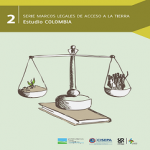Dinámicas territoriales en Nicaragua: control de activos tangibles e intangibles por género
El control de activos condiciona la posibilidad de que las familias puedan lograr un desarrollo adecuado de sus capacidades, superar la situación de pobreza y dinamizar sus territorios; esta condición es particularmente válida considerando la situación de las mujeres.







